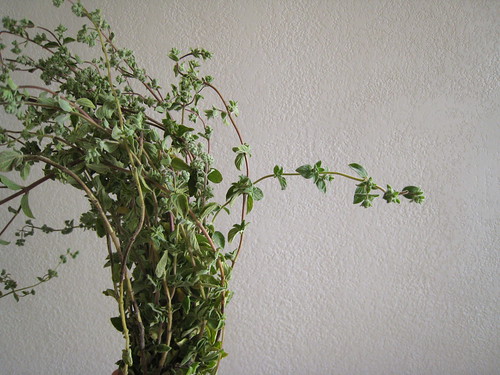
On a recent bright Saturday morning at the Ferry Plaza farmers’ market, I was pleasantly surprised to find large bouquets of za’atar. Star Route Farms grows the herb and sells large bunches of it at the market.
Za’atar is more commonly known as an herby spice mix spiked with sesame seeds. The mix is named after the plant, which is dried and mixed with a variety of ingredients such as sumac, cumin and salt. Traditionally, people in the Middle East have mixed their own za’atar according to family recipes and the local palate. The dried mix is sprinkled on labneh (a sour sheep’s milk yogurt cheese) and on small round flatbreads drizzled in peppery olive oil.
Fresh za’atar is a rare treat. I’ve never seen it in bay area farmers’ markets. It was hard to find the herb even in the markets of the greater Tel Aviv area. Once you get your hands on some, you can use it fresh and dry the rest in the sun. Store it in a tightly sealed jar.
Fresh za’atar has an aroma and flavor somewhat similar to wild oregano, but different. Za’atar has a little more attitude. It’s oregano’s hot-headed cousin. Its scent is a little more heady, its taste a little more powerful. Za’atar goes very nicely with soft cheeses, especially goat and sheep cheeses, as well as hummus. It spices up a roast chicken, along with a little lemon, sea salt, pepper and olive oil. Sprinkle some on sliced heirloom tomatoes in lieu of basil, or add it to cheese kreplach. Gently fry some leaves in olive oil as a sauce for pasta, then top with chunks of cooked chicken or fish and olives with a squeeze of lemon juice. I haven’t tried it, but I suspect it would go well with lamb kebab. It might also enliven a packet of shrimp or fish en papillote.
My favorite use of za’atar—dried or fresh—is on a round of traditional flatbread, warm and redolent with toasted sesame seeds and a thick layer of za’atar mix drenched in strong olive oil.
What do you like to do with za’atar?
